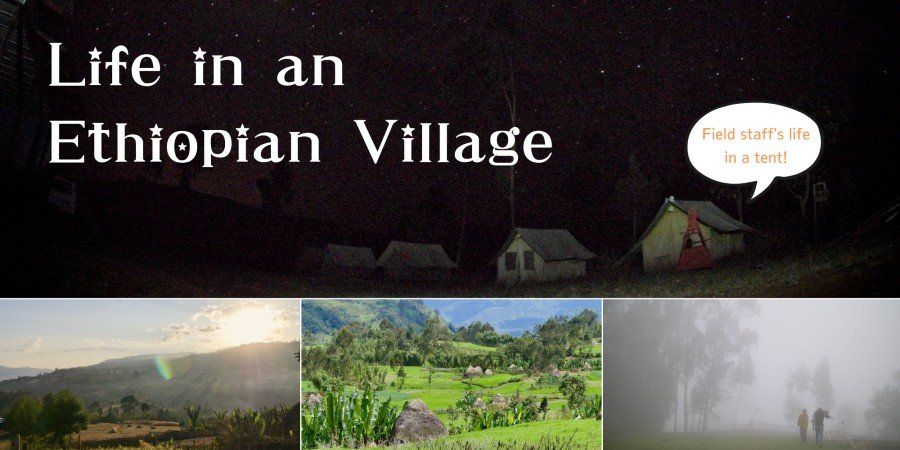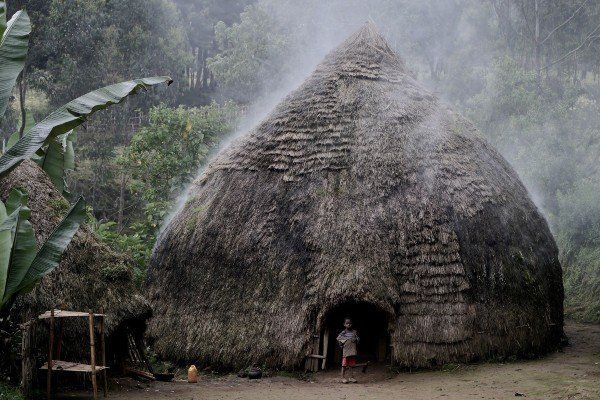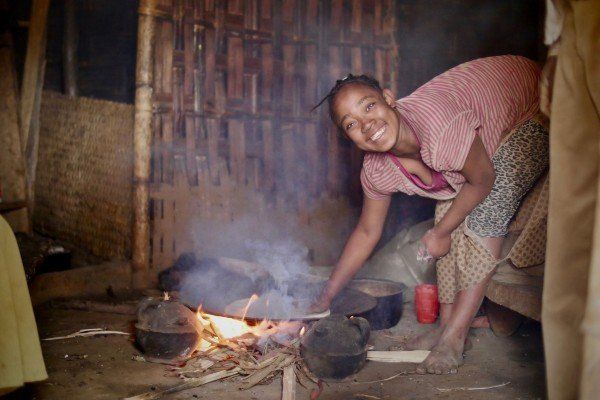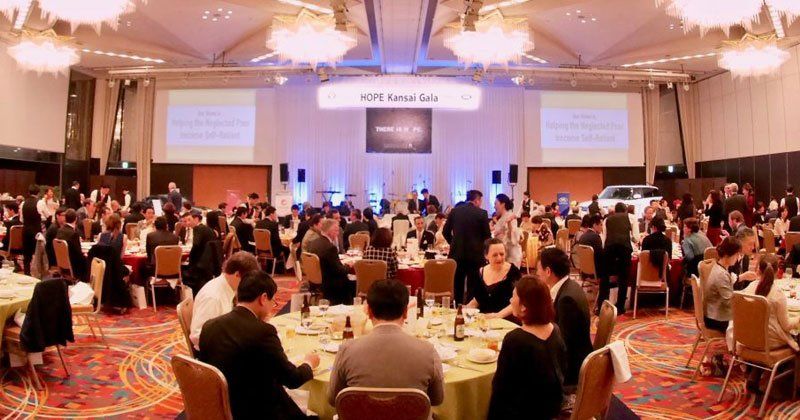Life in an Ethiopian Village
Nature-rich village mornings
Mornings in the village at the project site, which is located over 2300 m above sea level, always felt refreshing as if you spent the night camping in the woods. There is no electricity or gas, but the view of the lush and quiet mountains and valleys is refreshing, like a very luxurious nature getaway from the hustle and bustle of the city.
As I wash my face and brush my teeth outside my tent, I see smoke rising from the roof of my neighbor's house. By 7 am, the villagers have already started the day, the women have fetched their water, and are busy preparing breakfast.
A smile in the middle of the hill
After breakfast, I start my work. I walk to the water springs near the top of a mountain to check on the progress of the construction of the water system, and chat with a few local families about their lives.
Walking through the village in the mountains on rugged paths very much feels like a proper mountain hike. You come across steep hills strewn with large rocks, but the villagers walk these precipitous paths every day. I often meet people who lug water in jerry cans on their way home or carry crops to sell at the market.
What surprises me are the women who climb these rocks in their slippery, thin plastic shoes, often faster than me in my trekking shoes! I always find their big smiles and warm greetings delightful as we pass each other.
The shoes worn by the village women
Children after school
By the time I finish my work and return to my tent, I see children on their way home from school. They don't have textbooks on them as they aren’t allowed to take them out from school but instead some children carry small yellow jerry cans filled with water back to their homes.
When I hold up my camera, some children become shy and run away, but others pose to get their pictures taken.
Children play volleyball and soccer in the flattened grounds near my tent.
They are very much into soccer but instead of a soccer ball, they kick around a ball of cloth. I was impressed by their creativity.
How I use water in the village
Before dinner, it is my daily routine in the village to walk to the water source which is three minutes away from my tent. I fill two 2-liter plastic bottles every day to wash my face, brush my teeth, and for drinking. Water for cooking is fetched separately, usually about three liters of water a day.
When I’m in the village, I can't shower because there are no bathing facilities, but I wash my hair once every three to four days with water from my plastic bottles. The villagers bathe in the river, but the frequency varies, and I’ve heard that some people bathe about once a month.
I only need enough water for one person, but in a large family, women and children must fetch about 40 liters of water in several batches, which is what they use on average every day.
To be in her shoes
There is an English expression “to be in someone’s shoes", which means ‘to share that person’s experience or circumstance.” It is important to actually spend time in the villages at the project sites and experience life as close as possible to the locals in order to understand their hardships.
After returning to Japan, when I use water, I remember my life in the village, and at the same time I feel the gratitude and guilt of being able to use water freely. I realized that I could learn a lot from their wisdom, even though I live in an environment where I rely on many material things that can be easily replaced when broken.
The water supply system constructed by HOPE makes the lives of the villagers safer and healthier.
I hope that my valuable life experience in the village can contribute in some way to HOPE.







